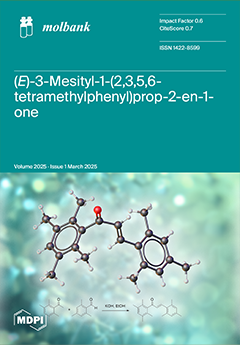The reaction of thorium nitrate hydrate with 2,6-dipicolinoylbis(
N,
N-diethylthiourea), H
2L
pic, results in the hydrolysis of the organic ligand and the formation of [Th(2,6-dipicolinolate)
2(H
2O)
4] (
1). Hydrolysis can be avoided
[...] Read more.
The reaction of thorium nitrate hydrate with 2,6-dipicolinoylbis(
N,
N-diethylthiourea), H
2L
pic, results in the hydrolysis of the organic ligand and the formation of [Th(2,6-dipicolinolate)
2(H
2O)
4] (
1). Hydrolysis can be avoided by the use of [ThCl
4(DME)
2] (DME = 1,2-dimethoxyethane) as the starting material and the exclusion of water. The product, [Th(L
pic)
3]
2− (
2), crystallizes as diammonium salt in form of yellow crystals in moderate yields. The thorium ion in the complex is nine-coordinate by the central
O,
N,
O donor atoms of three deprotonated {L
pic}
2− ligands. The sulfur atoms of the ligands do not bind to the actinide ion, but establish hydrogen bonds to the ammonium counter ions. A similar coordination sphere is also observed in the uranium(IV) complex [UAu
2(L
pic)
3}] (
3), which was obtained from a reaction between H
2L
pic, [U
2I
6(1,4-dioxane)
3] and [AuCl(tht)] (tht = tetrahydrothiophene) in the presence of triethylamine. Charge compensation is established by the linear coordination of two Au
+ ions between each two sulfur atoms of the ligands. The products have been studied by X-ray diffraction and IR spectroscopy. The actinide ions in both {L
pic}
2− complexes have coordination number nine, but establish slightly different coordination spheres.
Full article





